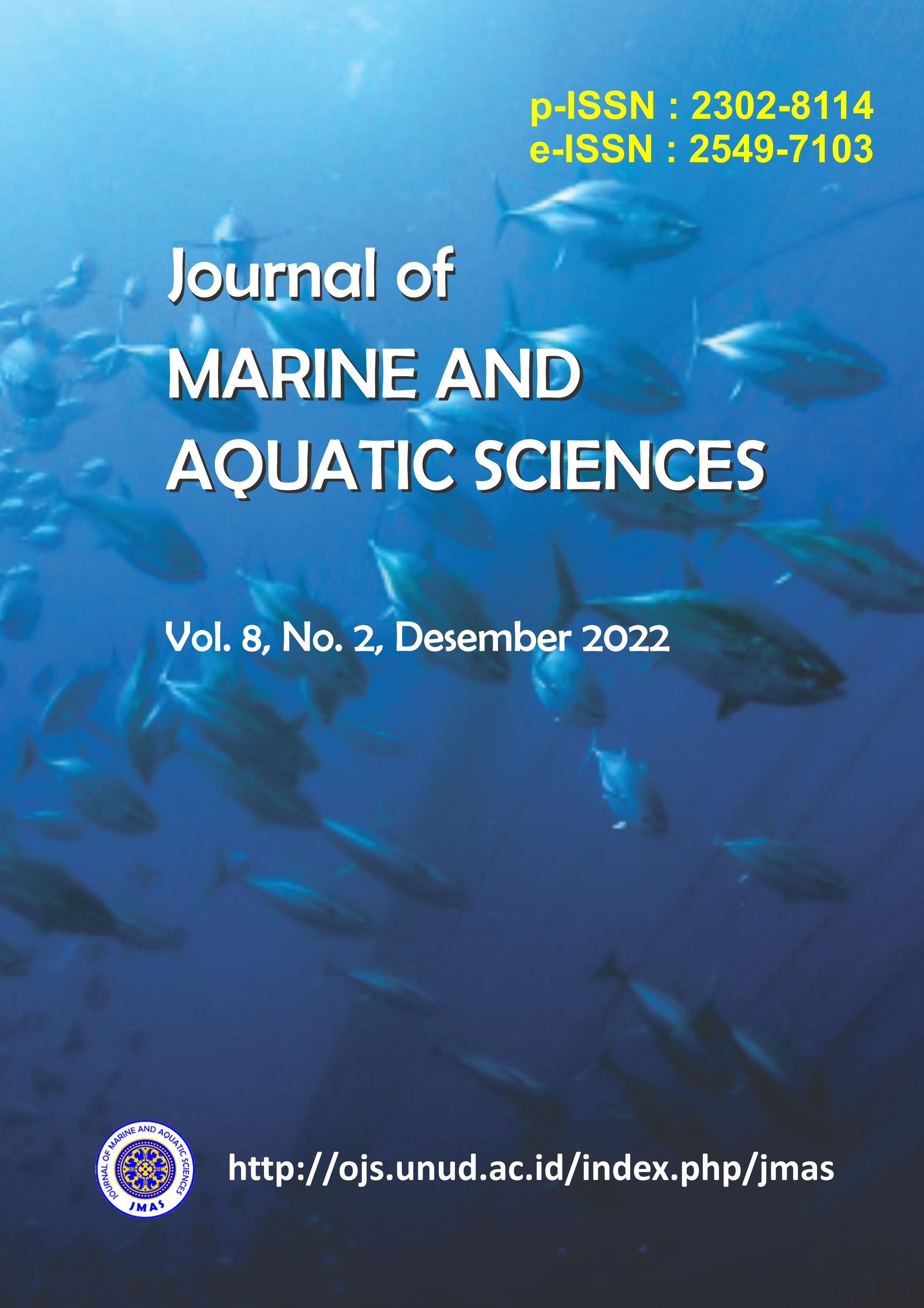Keragaman Genetik Penyu Lekang (Lepidochelys olivacea) Dan Kaitannya Dengan Pola Arus Di Perairan Samudera Hindia Dan Perairan Tengah Indonesia
Abstract
Indonesia is an important habitat for olive ridley (Lepidochelys olivacea) that it is necessary for sustainable management with respect to biological and ecological aspects as well as its environment. Genetic diversity and connectivity of L. olivacea can be calculated by using mitochondrial DNA analysis approach. The water circulation pattern are greatly affects to the distribution of L. olivacea that can be a transport medium for its migrations. This study aims to determined the genetic diversity of L. olivacea and its relation to water circulation across western and center of Indonesian waters. Samples of L. olivacea were collected in 6 locations across western and center of Indonesian waters from August 2015 to December 2016. The molecular analysis was conducted on control region gen based on 791-bp fragment. The water circulation analysis was performed through INDESO data and visualized by using Ferret software. Phylogenetic analysis showed that there are population connectivity of L. olivacea between western and central Indonesian waters. While population of L. olivacea in Kapoposang Island tend to be different compared to other populations. Genetic diversity analysis showed that L. olivacea from western Indonesia are more higher than center Indonesia. The water circulation analysis suggests that there is an established connection between western and center indonesian waters that connected by Northwest and Southeast seasons current, which the current vector indicates the movement of alternating water throughout Aceh, Pariaman, Panggul, Serangan, Kapoposang Island and Tuafanu populations.
Downloads

This work is licensed under a Creative Commons Attribution 3.0 International License.
Copyright 2012 - 2023 Journal of Marine and Aquatic Sciences (JMAS)
Published by Fakultas Kelautan dan Perikanan Universitas Udayana, Denpasar, Bali, Indonesia
JMAS (p-ISSN 2302-8114; e-ISSN 2549-7103)


